Inbound Email Marketing: The Future is in Your Inbox
Hey there! Have you checked your inbox today? Of course, you have! It's part of your routine. Now imagine all the potentials your business inbox could have. It's about time we look at something exciting that could be a game changer for your marketing strategies. It's all about inbound email marketing.
You may think, “Isn't email marketing kind of…old news?” I hear you but hold on. Yes, email marketing has been around for a while. But there's a twist here. We're not just talking about any email marketing, but ‘Inbound' Email Marketing. It's a fresh and innovative approach that allows you to build deeper connections, generate organic traffic, and foster genuine, engaging customer relationships right from your inbox.
With an ever-evolving digital landscape, the future is, without a doubt, tucked away in your inbox. So buckle up and join us as we navigate the fascinating world of inbound email marketing!
Table of Contents
What is Inbound Email Marketing?
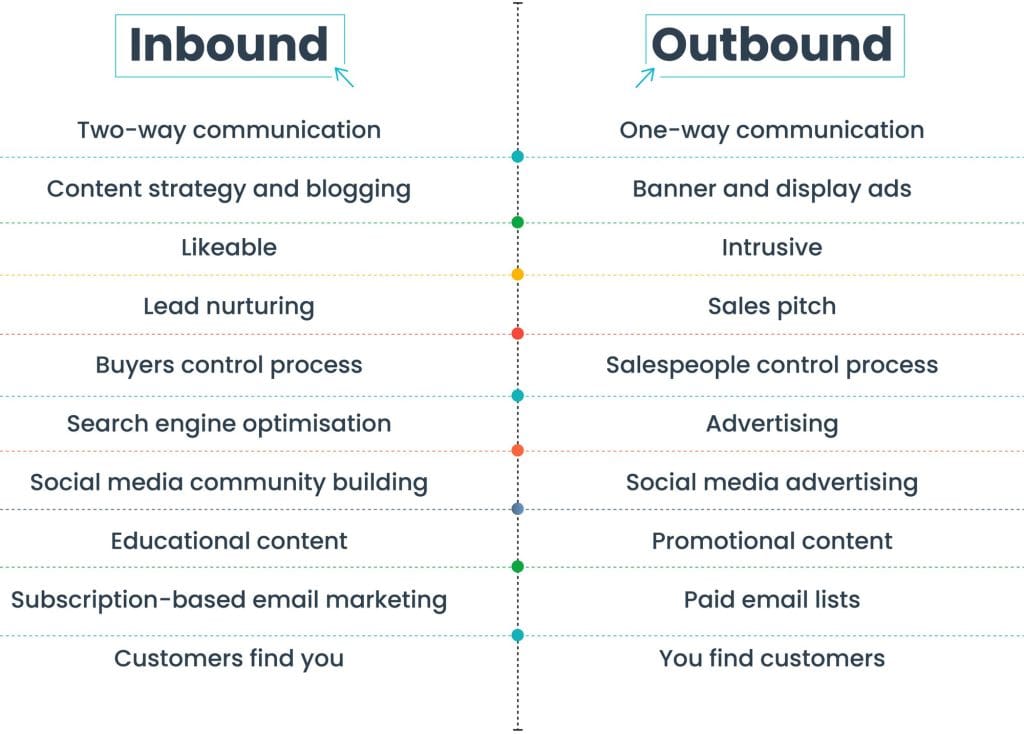
In the digital era, marketing strategies constantly evolve to engage the modern consumer more effectively. Amid the digital din, one approach that stands the test of time is email marketing, specifically inbound email marketing. This form of marketing involves engaging customers with content tailored to their needs and interests, with the ultimate goal of nurturing a long-term relationship.
Defining Inbound Email Marketing
Inbound marketing is a strategy that involves drawing customers to a product or service through relevant, tailored content that provides value and resonates with the audience. Unlike traditional, outbound marketing strategies that push messages to broad audiences, inbound marketing focuses on pulling interested prospects in by creating content that aligns with their interests and needs.
Inbound email marketing, then, applies this inbound philosophy to email communications. It centres around delivering relevant, engaging content straight to the customer's inbox. This approach is permission-based, meaning businesses email individuals who have expressed interest in their content or services. This method ensures compliance with regulations like GDPR and CAN-SPAM and guarantees that the audience is invested in and appreciative of the content.
Components of Inbound Email Marketing
At its core, inbound email marketing involves three key elements: personalised content, audience segmentation, and actionable analytics.
- Personalised Content: Inbound email marketing goes beyond merely addressing the recipient by their first name. It involves understanding the recipient's needs, behaviours, and preferences to tailor content that truly resonates with them. This content could include educational material, product recommendations, offers, or any other information relevant to the recipient. A personalised approach improves open email rates and fosters a sense of the relationship between the brand and its audience.
- Audience Segmentation: A one-size-fits-all approach only works in inbound email marketing. Marketers must segment their audience based on demographics, past purchases, website behaviour, and engagement levels. This segmentation allows businesses to send more relevant and targeted content, increasing the effectiveness of their email marketing efforts.
- Actionable Analytics: Analysing key metrics such as open rates, click-through rates, and conversion rates is crucial to understanding the effectiveness of inbound email marketing campaigns. These insights help marketers tweak and optimise their strategy, content, and delivery, improving their campaigns' return on investment (ROI).
Benefits of Inbound Email Marketing
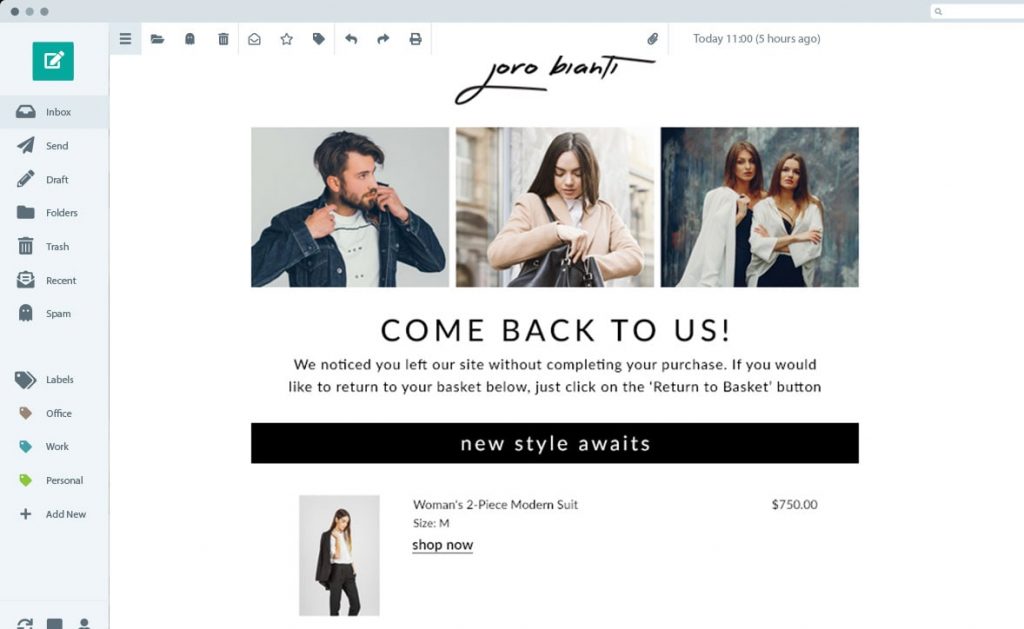
Inbound email marketing presents several benefits that elevate it as a powerful tool in a marketer's arsenal.
- Customer Engagement: Through personalised, relevant content, inbound email marketing allows businesses to maintain ongoing customer engagement. This engagement often leads to higher customer retention rates and stronger customer relationships.
- Cost-effectiveness: Email marketing generally provides a higher ROI than other marketing channels, mainly because it's inexpensive and reaches a large audience. When inbound tactics are applied, this ROI can be further maximised by ensuring a higher engagement rate.
- Brand Awareness and Authority: Regular, value-adding emails can significantly boost brand awareness and establish a business as a thought leader. This authority can attract more customers and create more business opportunities.
- Conversion and Sales: By providing targeted, relevant content, inbound email marketing can gently guide potential customers through the sales funnel, leading to higher conversion rates and increased sales.
Inbound email marketing is a strategic approach to building robust, value-based customer relationships. By delivering personalised, engaging content directly to the customer's inbox, businesses can maintain continuous engagement, enhance brand awareness, and, ultimately, drive higher conversions and sales. It is a critical marketing tool businesses should leverage to stay competitive in today's digital landscape.
The Power of Email Marketing: By the Numbers
You might be asking yourself, “Why email marketing? Isn't social media the place to be?” While social platforms play a significant role in a well-rounded digital marketing strategy, email marketing is far from antiquated. Here's why:
- As of 2023, there are over 4.3 billion email users worldwide, and this is expected to increase to over 4.5 billion by 2024. That's more than half the planet's population!
- A 2022 study by Constant Contact found that for every $1 spent on email marketing, businesses can expect an average return of $36.
- According to Email Mastery, segmented and targeted emails generate 58% of all revenue.
These statistics make one thing clear: email isn't going anywhere. But to unlock its full potential, businesses must adopt an inbound approach.
Building Relationships with Inbound Email Marketing
As with all inbound marketing, the central principle of inbound email marketing is to add value. Instead of pushing sales messages, inbound email creates meaningful interactions and nurtures relationships. Here are some methods to achieve this:
Personalisation

When it comes to personalisation, it goes way beyond simply popping someone's name into an email (although that's a great way to begin!). It's about genuinely grasping your customers' interests and requirements and customising your emails to match their preferences. And you know what? Segmenting your email list can work wonders in delivering that personalised content that truly hits home with diverse audiences.
Think about it this way: each customer is unique, with their own set of interests, needs, and preferences. So, why should your emails be one-size-fits-all? By taking the time to understand your customers on a deeper level, you can tailor your email campaigns to speak directly to their specific desires and pain points.
Imagine you're a clothing retailer, for instance. Some customers are all about the latest fashion trends, while others prioritise comfort and functionality. By segmenting your email list based on these preferences, you can send targeted content that appeals to each group. Fashion-forward folks will receive emails showcasing the hottest new arrivals and styling tips, while the comfort-seekers will receive messages emphasising cosy fabrics and practical designs. It's a win-win situation that boosts customer engagement and ultimately drives conversions.
The beauty of email segmentation lies in its flexibility. With your previous emails, you can slice and dice your list based on various factors, such as demographics, purchase history, browsing behaviour, or engagement levels. This granular approach allows you to tailor your content to suit the unique needs of each segment, creating a more personalised and relevant experience for your customers.
Now, I know what you might be thinking. Segmenting your email list sounds like work. And yes, it does require some upfront effort. However, the long-term benefits are well worth it. Not only does it help you craft more targeted and engaging emails, but it also helps you build stronger relationships with your customers. When people feel like you genuinely understand and cater to their preferences, they're likelier to stay loyal to your brand and return for more.
So, don't just stop adding a recipient's name to your emails. Take it a step further and embrace the power of personalisation. Dive into your customers' interests and needs, and use email segmentation to deliver tailored content that resonates with each distinct audience. Trust me, the results will speak for themselves, and you'll be well on your way to fostering deeper connections and driving success in your email marketing efforts.
Content

You know, when it comes to emails, it's crucial to make sure they're packed with valuable and engaging content. Otherwise, they'll end up right in the dreaded trash folder. So, let's dive into what makes email content effective and how you can keep your readers hooked!
There's no one-size-fits-all approach to creating great email content. You have many options: blogs, infographics, case studies, webinars, ebooks – you name it! The key is choosing the best format for your audience and the message you want to convey.
Regardless of your chosen format, the primary goal is to educate, entertain, or inspire your readers. You want to provide them with something valuable that they can't resist. Think of it as a way to establish a strong connection with your audience and keep them returning for more.
Consider sharing industry insights, practical tips, or how-to guides regarding education. Show your expertise and help your readers solve their problems or improve their skills. People love learning new things, and by offering valuable knowledge, you'll position yourself as a trusted resource.
But remember to sprinkle in some entertainment! Injecting humour, storytelling, or engaging visuals can make a significant difference. We all enjoy a good laugh or an interesting narrative, so don't be afraid to add a touch of personality to your emails. This will help you stand out from the crowd and create a more memorable experience for your readers.
And let's not underestimate the power of inspiration. Share success stories, motivational anecdotes, or thought-provoking ideas that ignite your readers' passion and drive. Inspiring content has the potential to leave a lasting impact and even spark positive action from your audience.
Remember, the key to effective email content is balancing education, entertainment, and inspiration. Mix it up, experiment with different formats, and closely watch your audience's response. By constantly delivering value and engaging your readers, you'll increase your chances of staying out of that dreaded trash folder and building a loyal following.
Timing
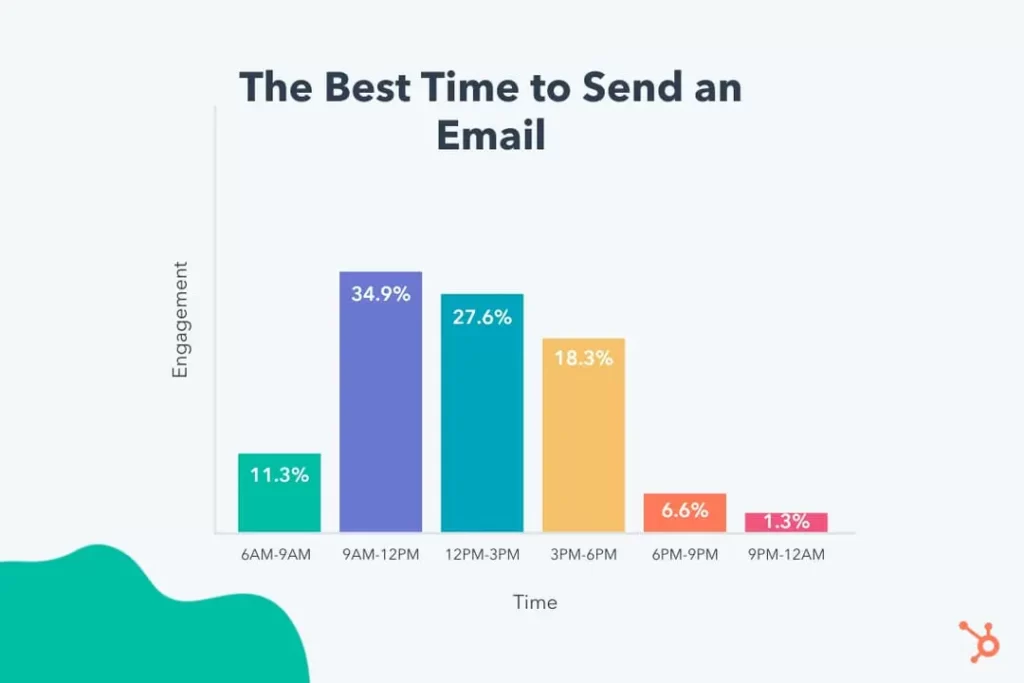
You want to avoid inundating your subscribers with emails that could annoy them. On the flip side, you also don't want to go radio silent and risk fading into the background, forgotten among the sea of messages in their inbox. It's all about striking that sweet spot.
Imagine You have a list of valuable subscribers eagerly awaiting your updates and offers. They've entrusted you with their email addresses, permitting you to connect with them. You want to nurture this relationship and keep them engaged without overwhelming them. That's where the frequency and timing of your emails come into play.
Think of your emails as a conversation between friends. If you bombard your friends with a constant stream of messages, it's only a matter of time before they start tuning you out. Similarly, they might forget you exist if you only reach out sporadically or once in a blue moon. It's essential to strike the right balance by finding a rhythm that keeps you present in their minds without becoming a nuisance.
But frequency alone is not enough; timing is equally important. Like in a real conversation, your message might go unnoticed if you interrupt someone while busy or preoccupied. The same goes for emails. Sending your messages at the wrong time can result in them being overlooked or buried in a crowded inbox.
To maximise the impact of your emails, consider your subscribers' habits and preferences. Consider their time zones, work schedules, and typical online behaviours. You want to catch them when they're most likely receptive to your message.
Utilising email marketing tools can be immensely helpful in optimising your timing. These tools can provide insights and analytics, allowing you to identify the best times to connect with your audience. By leveraging data and trends, you can schedule your emails to hit their inboxes when they are most likely to engage with your content.
Remember, it's all about building a relationship with your subscribers. You want to be a welcome guest in their inbox, providing value and relevance. Finding the right balance in frequency and timing ensures that your emails are eagerly anticipated, opened, and read, helping you forge stronger connections with your audience.
Mastering the Art of Inbound Email Marketing
Now, let's look at how you can develop and implement an effective inbound email marketing strategy:
Understanding Your Audience
Understanding your audience is like having a secret weapon in your marketing arsenal. And one way to do that is by developing buyer personas. These personas are like imaginary profiles representing different segments of your target audience.
Picture this: You're a skilled archer preparing for a competition. Before you even pick up your bow, you take the time to study your opponents. You learn their strengths, weaknesses, and even their shooting styles. With this knowledge, you can adjust your strategy and aim precisely, increasing your chances of hitting the bullseye. Well, the same goes for email marketing!
By developing buyer personas, you deeply understand your audience's needs, interests, and pain points. It's like getting a backstage pass to their thoughts and emotions. You gain insights into what makes them tick, their problems, and how your product or service can rescue them.
Imagine you're a fashion retailer. You may have different types of customers: fashion-forward trendsetters, budget-conscious shoppers, or busy professionals looking for stylish yet comfortable outfits. Each of these customer segments has distinct preferences and pain points. Creating buyer personas for each group allows you to tailor your emails to their desires and challenges.
For instance, your trendy fashionistas might seek the latest runway-inspired looks, while your budget-conscious shoppers crave discounts and promotions. Meanwhile, busy professionals might value convenience and versatility in their clothing choices. Armed with this knowledge, you can customise your emails to showcase trendy outfits for the fashion-forward, exclusive discounts for the budget-conscious, and versatile wardrobe essentials for busy professionals.
Creating Valuable Content

Understanding your audience is the key to creating content that connects with them. And when I say “understanding,” I mean going beyond surface-level knowledge. It's about delving deep into their wants, needs, and preferences. Once you've cracked that code, you can start crafting content that hits all the right notes.
We're not just talking about churning out excellent articles, eye-catching infographics, or engaging videos. Although those are essential components, creating resonating content involves much more. It's about going the extra mile to develop material that caters to your audience's needs throughout their entire buyer's journey.
Think about it this way: your audience is on a journey at different stages. Some might be in the early exploration phase, becoming aware of their pain points or challenges. Others might be in the consideration stage, actively seeking solutions and comparing options. And then some are ready to make a purchase decision.
To create content that speaks to all these stages, you must be aware of and address their unique requirements effectively. Start by creating awareness-building content that educates and sparks interest in your audience. These could be blog posts, social media updates, or informative videos highlighting their problems and providing helpful insights.
Next, move on to the consideration stage. Here, your audience is actively seeking solutions, so your content should focus on providing them with valuable information about your products or services. This could involve creating comparison guides, case studies, or even interactive tools that assist them in evaluating their options.
Finally, when your audience is ready to decide, it's crucial to have content that helps them confidently move forward with their purchase. This could be testimonials, customer success stories, or even free trials or demos that allow them to experience your offering firsthand.
By tailoring your content to each stage of the buyer's journey, you demonstrate that you truly understand your audience's needs and are there to guide them throughout the process. This level of personalisation and relevance will help you establish a deeper connection with your audience and increase the chances of converting them into loyal customers.
Segmenting Your Email List
Segmentation is a fantastic tool that empowers you to categorise your email list into different groups depending on various factors like demographics, behaviour patterns, or where your subscribers are in their buyer's journey. It's like having a magic wand that helps you deliver tailored and meaningful content straight to the hearts and minds of your subscribers.
Think of segmentation as your secret sauce for creating a personalised email experience. By breaking down your list into segments, you gain the superpower to send targeted messages that speak directly to each group's unique interests and needs. It's a game-changer for building stronger connections with your audience.
Now, let's dive into the nitty-gritty of segmentation. First, demographics. This category includes essential details about your subscribers, such as age, gender, location, or any other relevant information that helps you understand who they are. By segmenting based on demographics, you can create email campaigns that resonate with specific groups, ensuring your messages hit the right chords with your recipients.
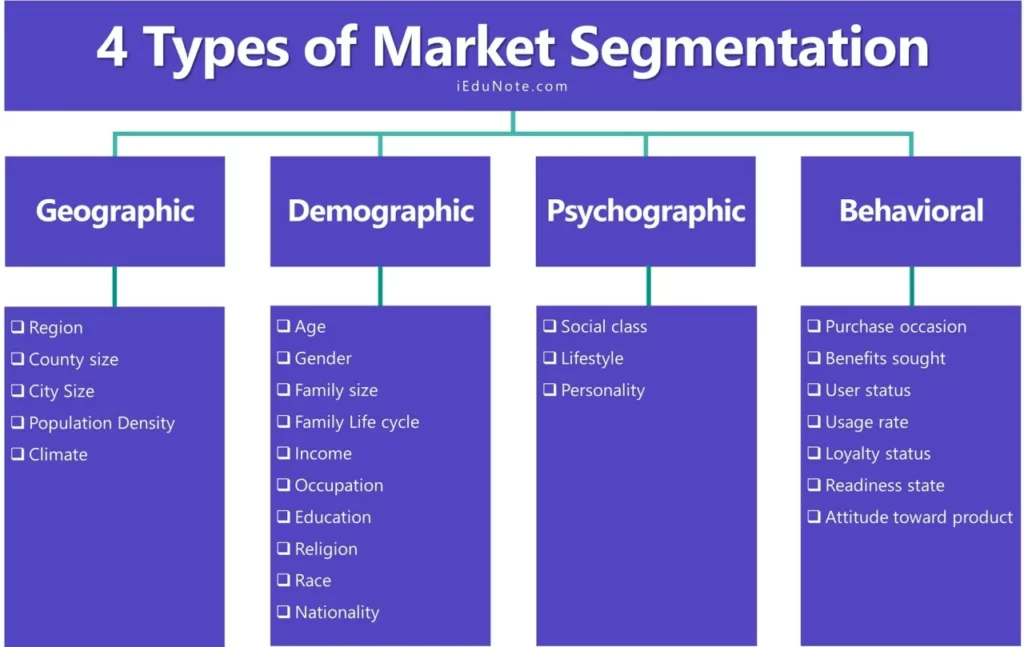
Next up, we have behaviour-based segmentation. This approach focuses on how your subscribers interact with your brand, engagement levels, and preferences. By analysing their past actions, such as email opens, clicks, or purchases, you can gather valuable insights and divide your list into segments based on their behaviour patterns. This enables you to send targeted emails that address their interests, boosting engagement and conversion rates.
Lastly, let's talk about segmentation based on the buyer's journey. This method involves dividing your subscribers into different stages of their purchasing process. Some may discover your brand for the first time, while others might be ready to purchase or need a little nudge to convert. By segmenting based on the buyer's journey, you can tailor your emails accordingly, providing the correct information, incentives, or reminders at each stage to guide your subscribers towards conversion.
By harnessing the power of segmentation, you can say goodbye to generic, one-size-fits-all email campaigns. Instead, you'll deliver personalised and relevant content directly to your subscribers' unique needs and interests. And when your audience feels understood and valued, they're more likely to engage with your emails, trust your brand, and ultimately take the desired actions you're aiming for.
Crafting Compelling Emails
We're at the stage where we get to put our creative hats on and start composing messages that truly resonate with our audience. But remember, the key here is to focus on adding value rather than aggressively pushing sales. We want to create emails that people genuinely look forward to receiving.
When crafting these gems, there are a few essential elements to remember. Firstly, your emails should be engaging and informative. Think of them as an opportunity to converse with your recipients rather than just bombarding them with promotional content. Share relevant and exciting information, provide valuable tips or insights, and address their pain points or interests. Doing so builds trust and establishes yourself as a reliable source of knowledge.
Additionally, it's crucial to maintain consistency with your brand's voice. Whether your brand is playful, professional, or somewhere in between, infuse your emails with that personality. This consistency helps in building brand recognition and makes your emails instantly recognisable. So, be true to your brand's character and let it shine through in your writing style, tone, and choice of words.
Now, let's talk about the almighty subject line—the gateway to your email. This little snippet of text holds tremendous power as it determines whether your email gets opened or ends up in the ignored pile. Capturing attention and sparking curiosity is essential to make your subject lines compelling. Think about what would pique your interest if you were on the receiving end. You could use intriguing questions, exciting teasers, or even create a sense of urgency. Just remember to keep it genuine and relevant to the content of your email.
Analysing and Optimising
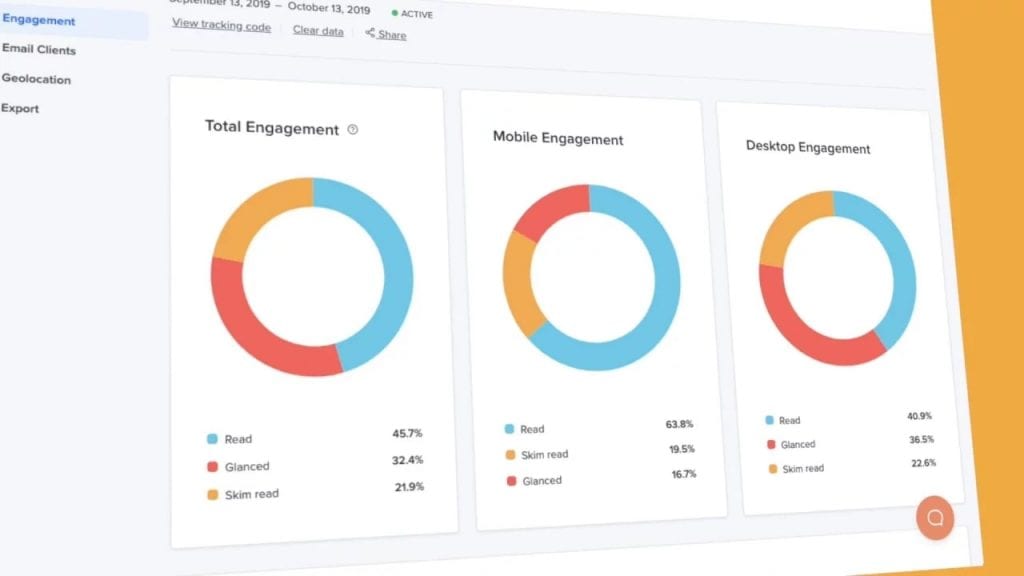
By leveraging analytics, you gain valuable insights that allow you to measure the success of your campaigns and continuously refine your strategies for optimal results.
Analytics is like your secret weapon in the world of email marketing. It empowers you to go beyond guesswork and make informed decisions based on real numbers. You can gauge the effectiveness of your email campaigns by monitoring and analysing various metrics, such as open rates, click-through rates, conversion rates, and subscriber engagement.
Imagine this: you send out carefully crafted emails to your subscribers, but how do you know if they're hitting the mark? Are potential customers opening your emails? Are they taking the desired actions, such as clicking links or purchasing? This is where analytics comes into play. It helps you uncover the answers to these critical questions.
With analytics, you can track the performance of individual campaigns, compare different email variations, and identify patterns and trends over time. By monitoring these metrics, you can determine what resonates with your target audience and doesn't. You may discover that subject lines with emojis receive higher open rates or that personalised content increases click-through rates. Armed with this knowledge, you can optimise your future campaigns accordingly.
But it doesn't stop there. Analytics lets you dive deeper into your data to understand the customer journey. You can gain insights into how your subscribers interact with your brand by tracking user behaviour and engagement within your emails and website. For example, specific audience segments are more likely to convert after receiving a specific type of email or visiting a particular landing page. With these insights, you can create more targeted and personalised email campaigns that resonate deeply with your customers.
Remember, the key to successful email marketing is continuously optimising your processes. Analytics is your trusty compass that guides you in the right direction. By regularly reviewing your data and metrics, you can identify areas for improvement, experiment with different strategies, and refine your approach over time. It's a cycle of constant learning and adaptation that helps you stay ahead in the ever-evolving world of email marketing.
The Future of Inbound Email Marketing
Inbound email marketing is not just a trend—it's here to stay. As technology continues to evolve, we can expect to see even more sophisticated personalisation and segmentation capabilities, allowing businesses to connect with their audience on a deeper level.
Inbound email marketing offers an incredible opportunity for businesses to build meaningful relationships with their customers. It's not just about selling—it's about providing value, engaging with your audience, and cultivating loyalty. So, whether you're a seasoned marketer or just starting, it's time to unlock the power of inbound email marketing—the future is in your inbox.
